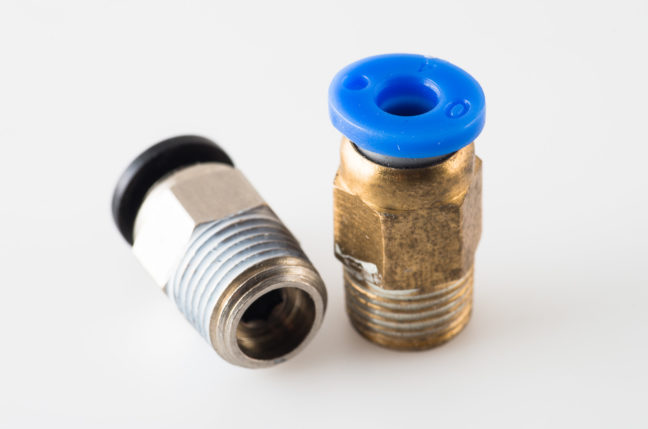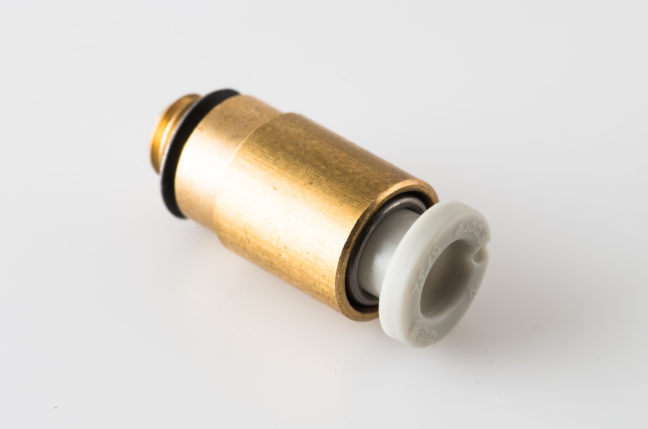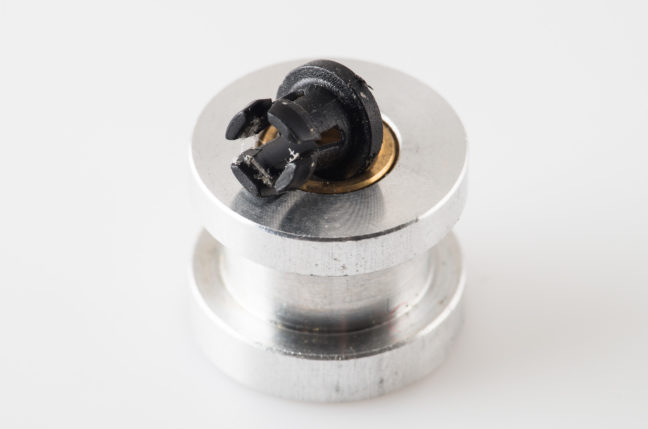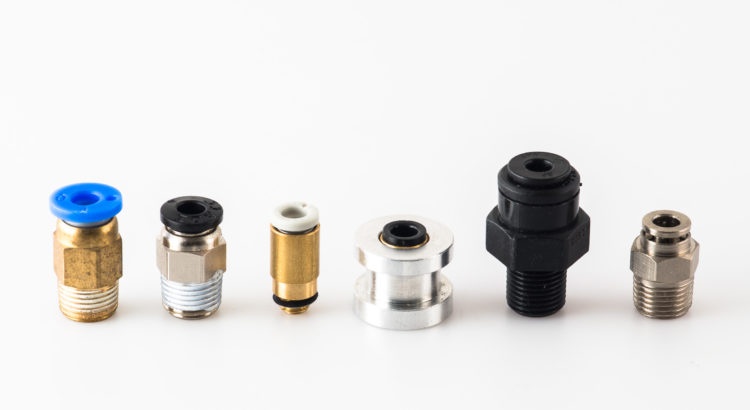There are a lot of options for bowden couplers and while I haven’t tried them all, here are the ones I’ve tried and my experiences with them. They were all used with 1.75mm filament, 4mm teflon tubes, a BondTech extruder, and an E3D v6.

There are a lot of bowden couplers like the ones above, they come in silver or brass, have black or blue tops, can block the teflon tubing or allow it to pass through. The ones I’ve seen work by gripping the teflon tube at many sharp points along its circumference. I’ve found they work well initially, but the constant retractions dig grooves in the teflon so the tube needs to be replaced occasionally. It can also become difficult to remove the teflon tube after this happens.

I’ve only used this kind briefly. It’s very compact, and this particular model uses M5 thread, which is convenient (you can use a M5 brass insert instead of printing threads). It held the teflon tube securely when I used it, but movement of the teflon tube would sometimes cause the plastic insert to make a clicking noise that was disturbingly similar to the sound of a motor skipping steps. That might be fixable with a plastic clip, but I haven’t tried that yet.

E3D’s embedded bowden coupler comes in several variations, the larger adapter shown above but I’ve mostly used the small brass insert version that can be press fitted into a plastic part. These can work well, especially with a small printed spacer, but the BondTech can produce enough torque that the insert pops out which is one of the more inconvenient failure modes. The flat metal blades in the plastic insert don’t seem to jam or break the way some of the other fittings can.

E3D’s threaded bowden coupler was my primary bowden coupler for a long time. It’s similar to their embedded coupler, but much larger and threaded. The insert work similarly to their embedded coupler but is larger. The reason I prefer this version is I can pre-load the fitting by screwing in the coupler with the teflon tube slightly protruding. When the teflon is press down flush with the end of the coupler, it jams the insert tightly against the teflon tube so it’s more secure and makes the printed spacer unnecessary. I’ve found this holds the teflon tube more securely and the insert is much less likely to pop out.

Saved the best for last. While I haven’t used this one as long as the others, it has quickly become my favorite. It’s spring loaded with enough pressure that it doesn’t require a clip to keep it from pushing back during retractions (this seems to change over time though). It’s easy to use, relatively compact, and best of all, the teflon tube hasn’t slipped at all since I installed it. The only place I’ve seen that sells these is RobotDigg.
